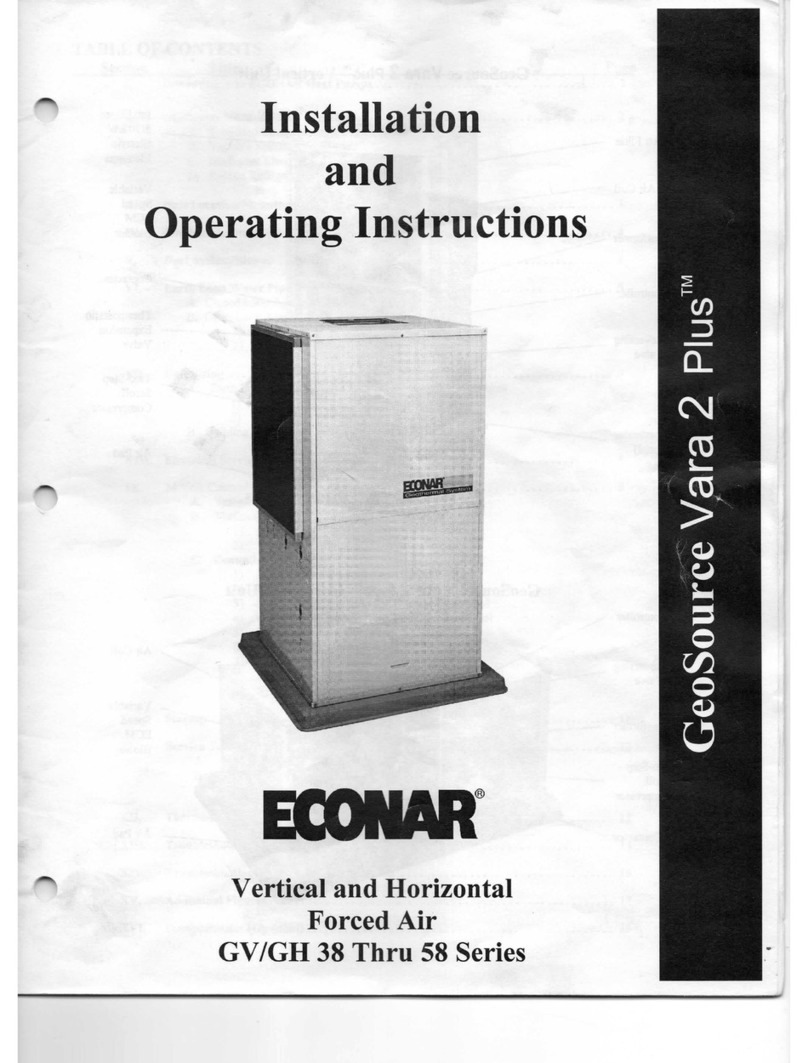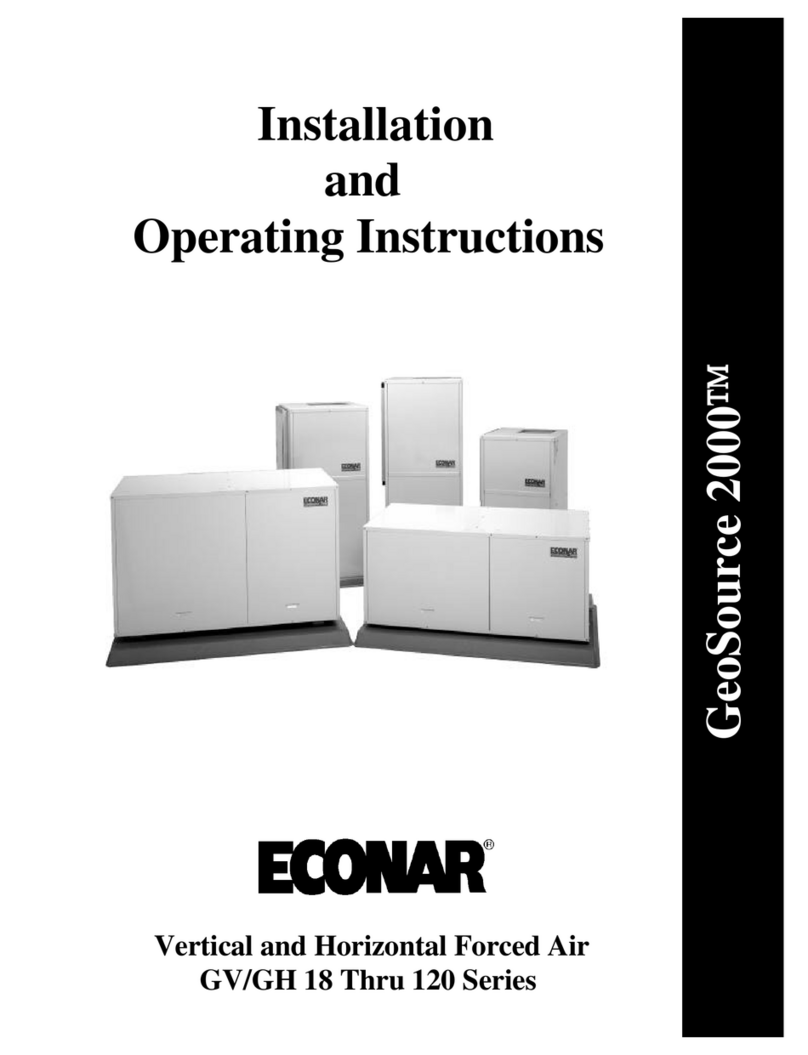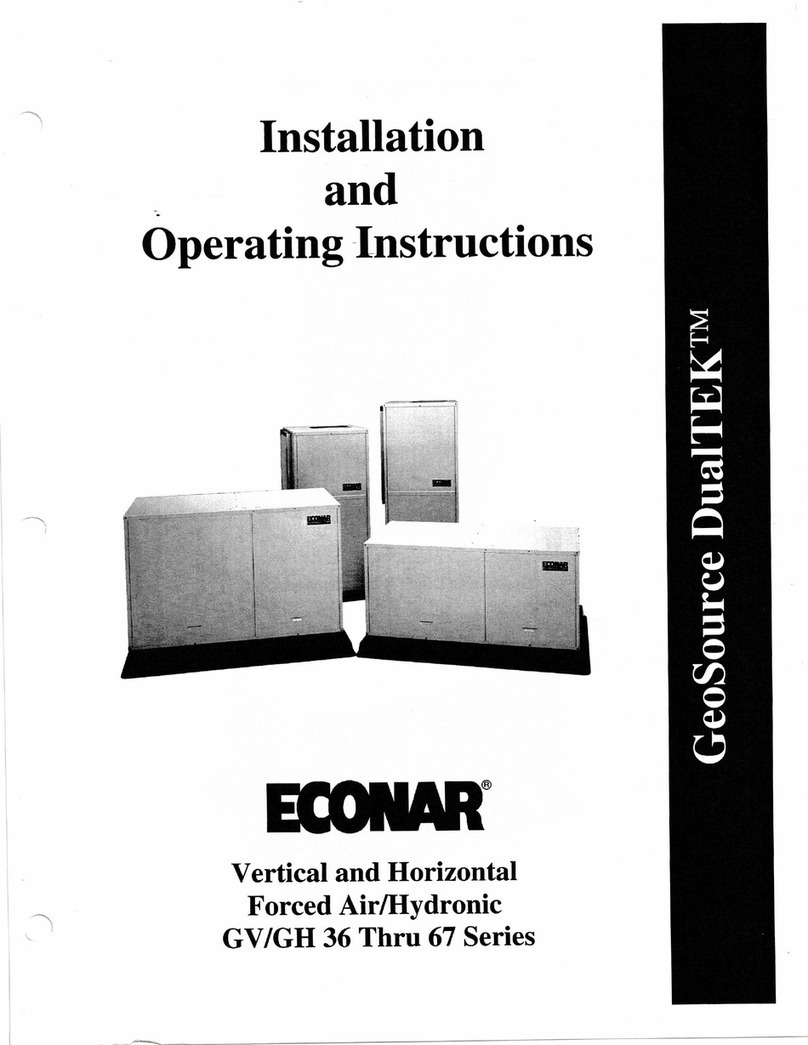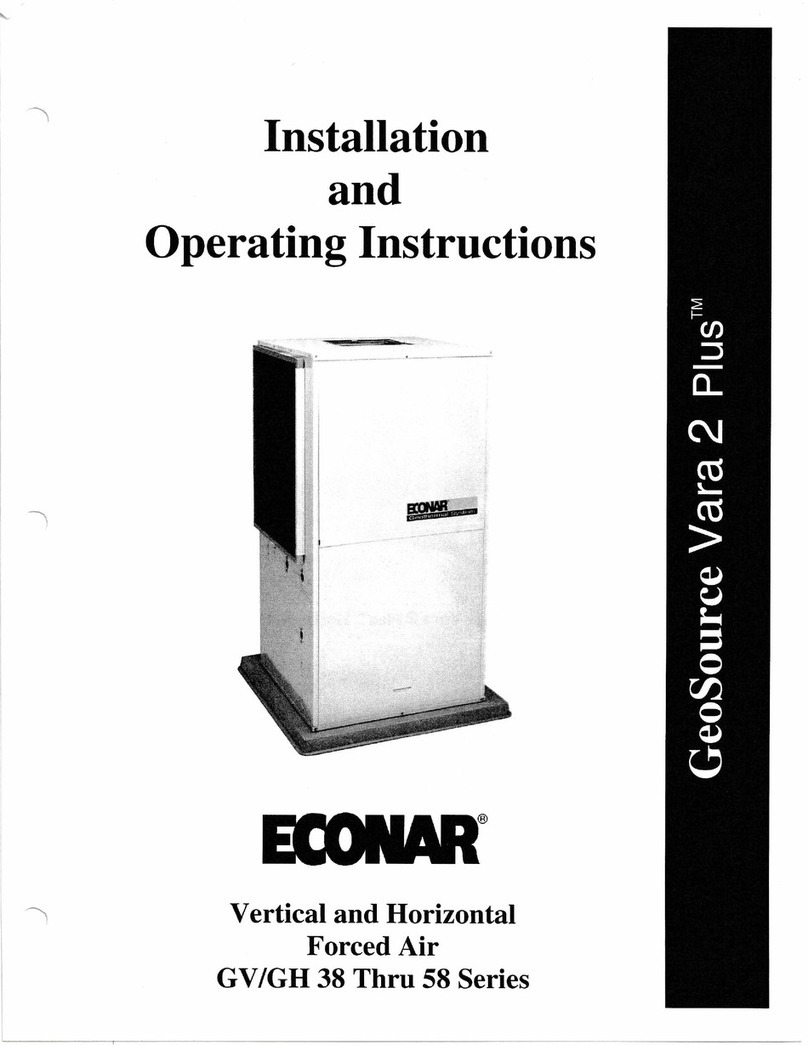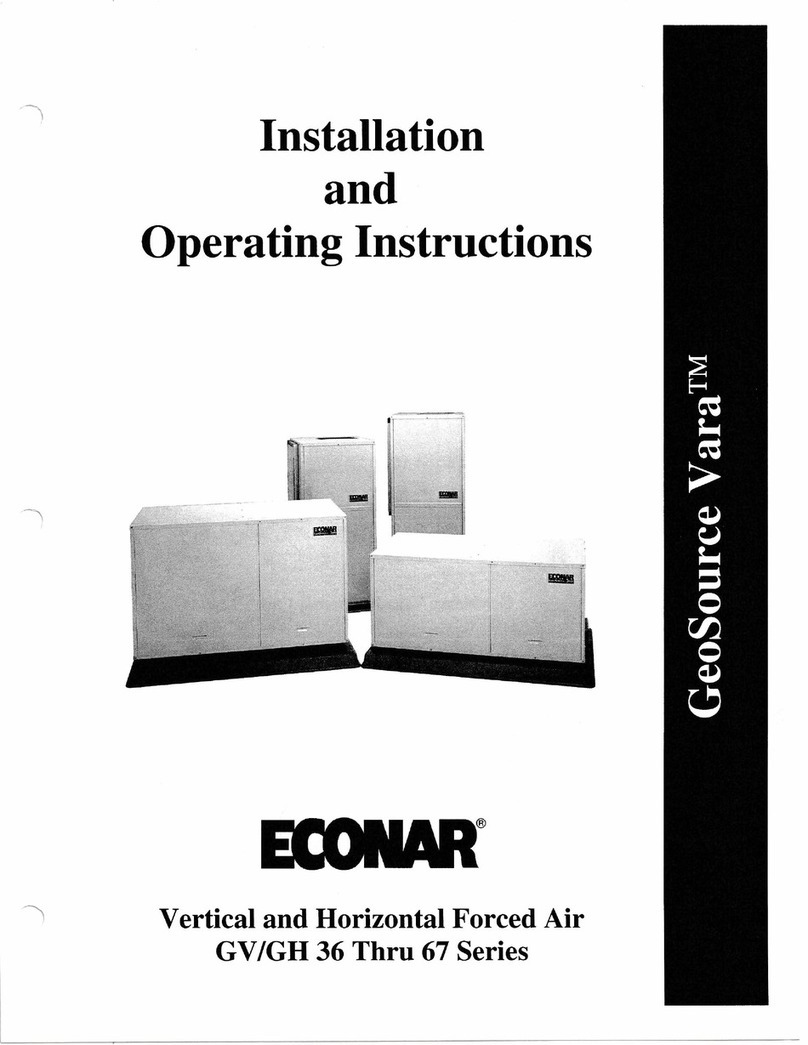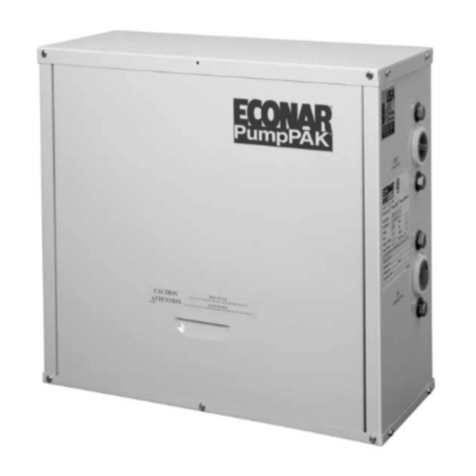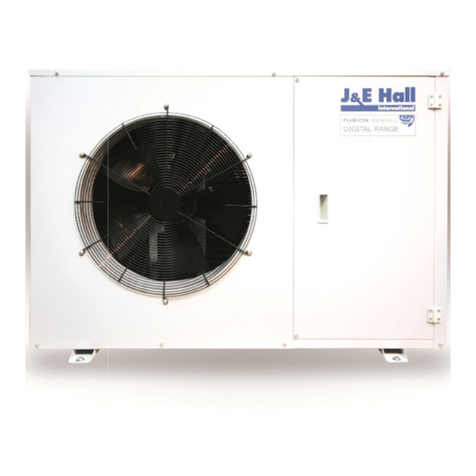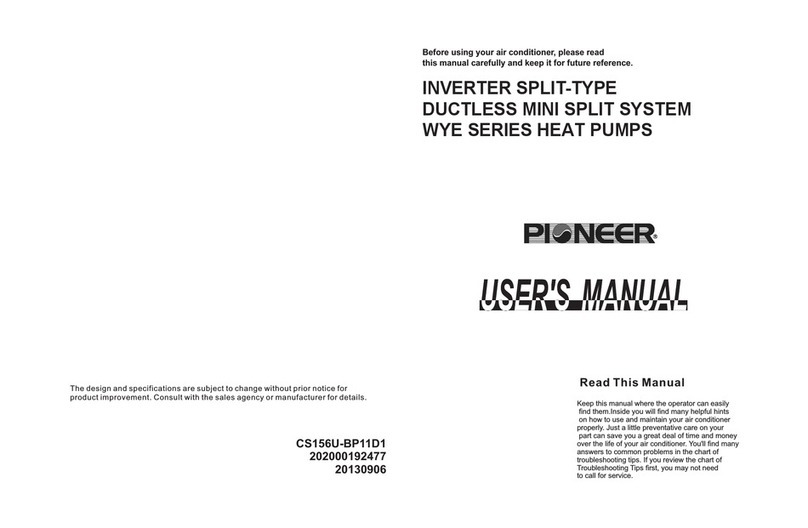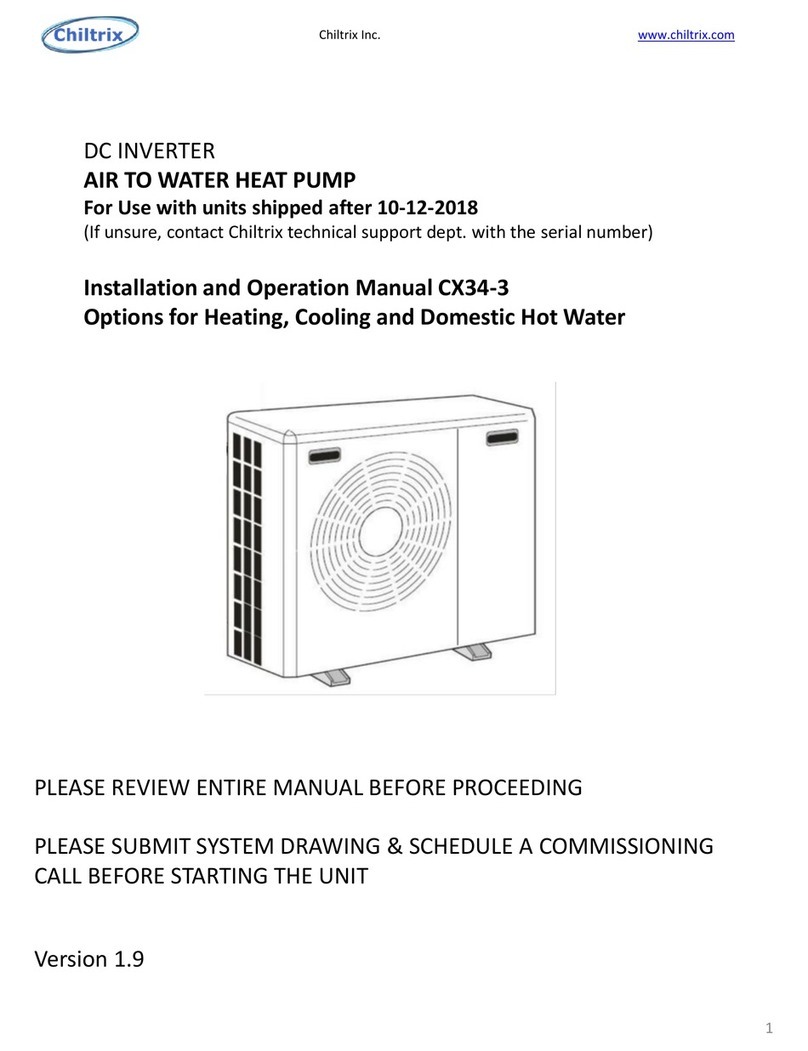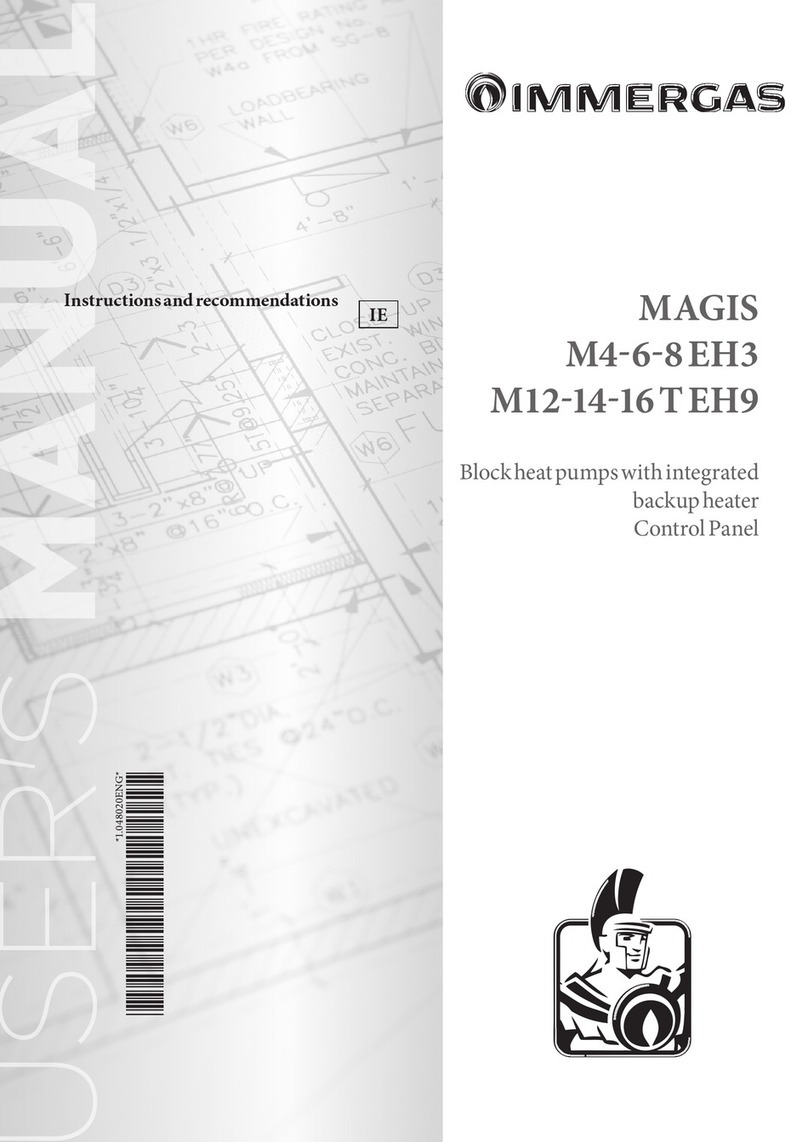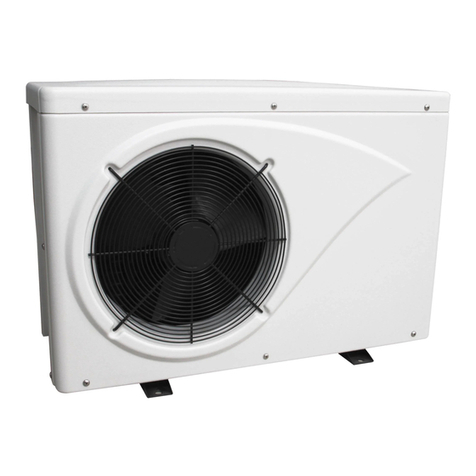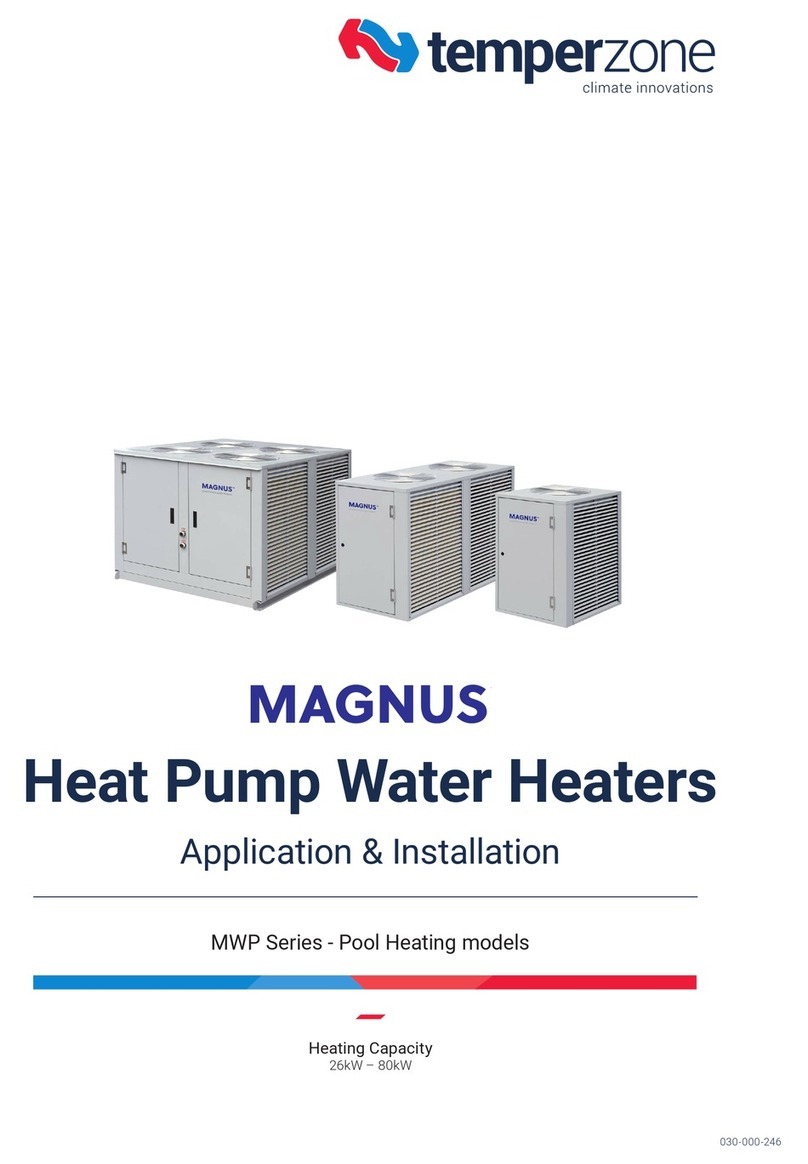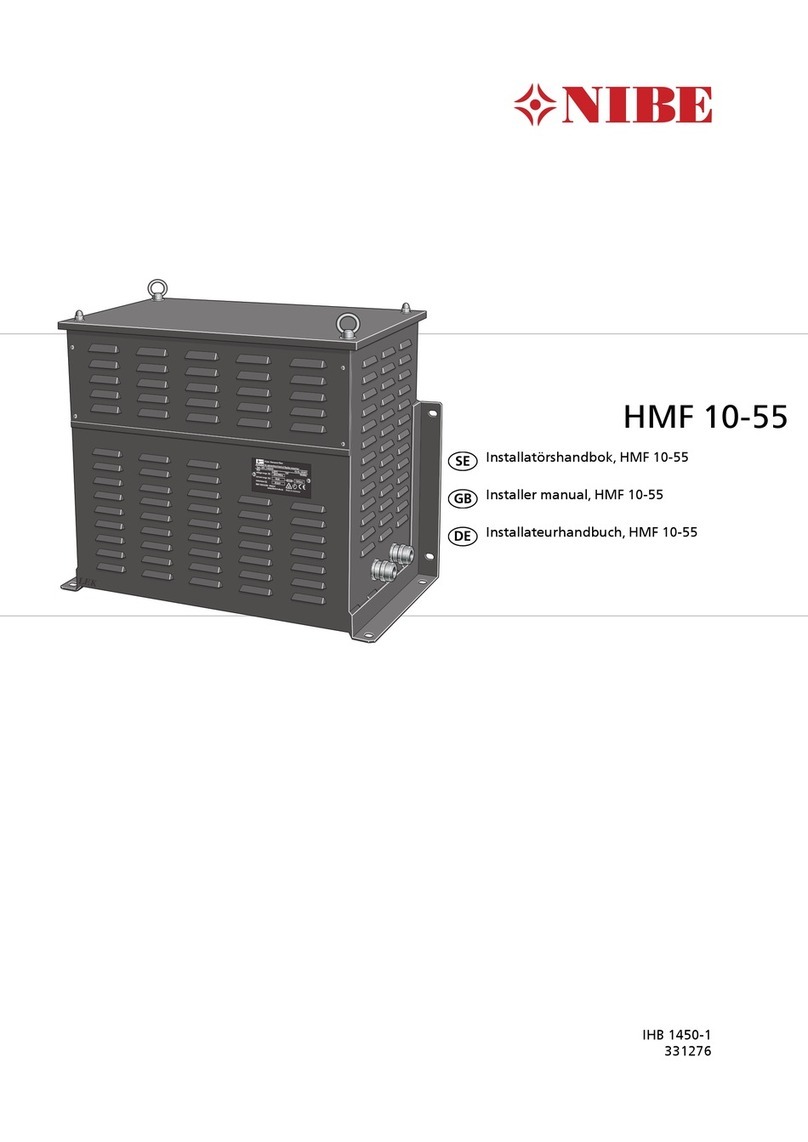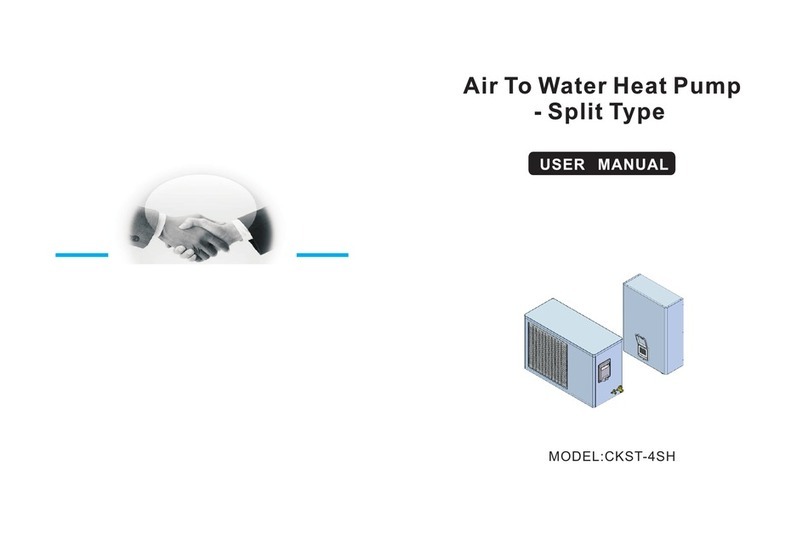
A. Ground Loop Installation
A Ground Loop system recirculates the same antifreeze
solution through a closed system of high-density
underground polyethylene pipe. As the solution passes
through the pipe, it collects energy (in the heating mode)
from the relatively warm surrounding soil through the
pipe and into the relatively cold solution. The solution
circulates to the heat pump, which traasfers energy out of
the solution, and then the solution circulates back through
the ground to exftact more energy.
The GeoSource Ultra is designed to operate on either
vertical or horizontal ground loop applications. Vertical
loops are typically installed with a well drilling rig up to
200 feet deep, or more. Horizontal loops are installed with
excavating or trenching equipment to a depth of about six
to eight feet, depending on geographic location and length
of pipe used. Loops must be sized properly for each
particular geographic area, soil type, and individual
capacity requirements. Contact ECONAR's Customer
Support or the local installer for loop sizing requirements
in your area.
Typical winter operating EWT to the heat pump ranges
from 25"F to 32oF.
VCAUTION - Ground Loops must be properly freeze
protected. Insufficient amounts of antifreeze may result in
a freeze rupturs of the unit or can cause unit shutdown
problems during cold weather operation. Propylene glycol
and Geothermal Transfer Fluid (GTF) are common
arfiifreeze solutions. GTF is a methanol-based antifreeze
and should be mixed 50Vo with water to achieve freeze
protection of 12oF. Propylene glycol antifreeze solution
should be mtxed 25Vo with water to obtain a 15oF freeze
protection.
elmportant - Do not mix more than 25Vo propylene
glycol with water in an attempt to achieve a lower than
15oF freeze protection, since more concentrated mixtures
of propylene glycol become too viscous at low
temperatures and cannot be pumped through the earth
Ioop. Horizontal loops typically use GTF, and vertical
loops typically use propylene glycol. Note - Always
check State and Local codes for any special requirements
on antifreeze solutions.
Flow rate requirements for ground loops are higher (see
Table 2) than ground water systems because water
temperatures are generally lower.
VCAUTION - Never operate with flow rates less than
specified. Low flow rates, or no flow, may cause the unit
to shut down on a pressure lockout or may cause a freeze
rupture of the heat exchanger.
elmportant - Figure 2 shows that Pressure/Temperafure
(P/T) ports must be installed in the entering and leaving
water lines of the heat pump. A thermometer can be
inserted into the P/T ports to check entering and leaving
water temperatures. A pressure gauge can also be inserted
into these P/T ports to determine the pressure differential
between the enterhg and leaving water. This pressure
6
differential can then be compared to the specification data
on each particular heat pump to confirm the proper flow
rate of the system.
An individually-sized ECONAR PumpPAKrM can supply
pumping requirements for the Ground Loop fluid, and can
also be used to purge the loop system. cNote - Refer to
instructions included with the PumpPAKrM for detail for
properly purging the ground loop.
elmportant - the pump must be installed to supply fluid
into the heat pump.
Filling and purging a loop system are very important steps
to ensure proper heat pump operation. Each loop must be
purged with enough flow to ensure two feet per second
flow rate in each circuit in the loop. This normally
requires a lVz to 3 HP high-head pump to circulate fluid
through the loop to remove all the air out of the loop.
Allow the pump to run 10 to 15 minutes after the last air
bubbles have been removed. After purging is completed,
add the calculated proper amount of antifreeze to give a
12oF to 15oF freeze protection After antilreeze has been
installed and thoroughly circulated, it should be measured
with a hydrometer, refractometer or any other device to
determine the actual freezing point of the solution.
The purge pump can be used to pressurize the system for
a final stalic pressure of 30 to 40 psig after the loop pipe
has had enough time to stretch. In order to achieve the 30
to 40 psig final pressure, the loop may need to be
pressurized to an initial pressure of 60 to 65 psig. This
static pressure may vary 10 psig from heating to cooling
season, but the pressure should always remain above 20
psig, so circulation pumps do not cavitate or pull air into
the system. EContact your local installer, distributor or
factory representative for more information.
B. Ground Water Installation
A Ground Water system gets its name from the open
discharge of water after it has been used by the heat
pump. A well must be available that can supply all of rhe
water requirements (see Table 2) of the heat pump for up
to 24 hotsrs/day on the coldest winter day plus any other
water requirements drawing off of that same well.
Figure 3 shows the necessary components for ground
water pipiag. First, a bladder tlpe pressure tank with a
"draw down" of at least lVzttmes the well pump capacity
must be installed on the supply side of the heat pump.
Shut-off valves and boiler drains on the entering and
leaving water lines are necessary for future maintenance.
elmportant - A screen strainer must be placed on the
supply line with a mesh size of 40 or 60 and enough
surface area to allow for particle buildup between
cleanings.
elmportant - Pressure/Temperature @/T) ports must be
placed in the supply and discharge lines so that
thermometers or pressure gauges can be inserted into the
water stream.




















